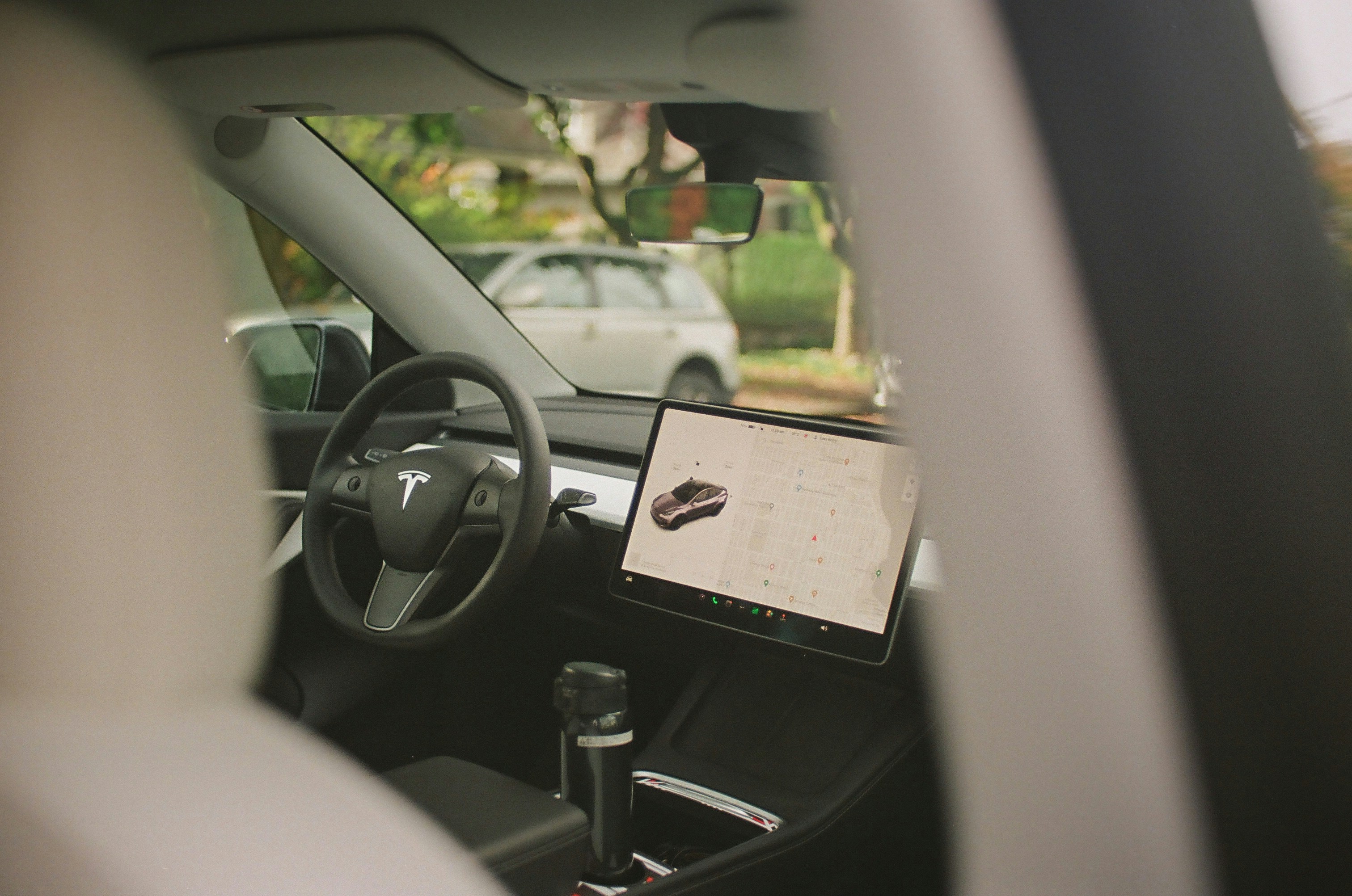Is EV Salary Sacrifice Worth It? Car Scheme Pros and Cons

EV salary sacrifice is often promoted as the cheapest way to drive an electric car. And really, it is. Our drivers save between 30-60% compared to personal leasing. But whether or not EV salary sacrifice is worth it depends on your salary, tax position and priorities.
This guide takes a balanced look at the scheme so you can judge it on facts, not slogans. We’ll explain how salary sacrifice works in practice, set out the key pros and cons for employees and employers, and show worked examples across common salary bands.
We’ll also highlight when the scheme may not be the right choice.
By the end, you’ll have a clear, practical view of whether EV salary sacrifice suits your situation—and what to consider before committing.
How salary sacrifice car schemes actually work
Salary sacrifice involves exchanging part of your gross salary (i.e. pre-tax) for a company benefit. In this case, an electric vehicle.
Your employer effectively leases the car on your behalf and provides it to you as a benefit-in-kind. You then ‘sacrifice’ the equivalent amount from your pre-tax salary to pay for it. And it’s really not much of a sacrifice at all because the deduction happens before your Income Tax and National Insurance contributions are calculated. That means you reduce your tax payment and save between 30-60% on an EV, depending on your tax bracket.
Now, this does mean you won’t own the vehicle at the end of the agreement. However, if you fall in love with it, loveelectric can request a purchase price on your behalf. We’ve had numerous customers who have been able to buy the car outright at the end of their lease term with our support.
We also want to point out that the lease is tied to your employment, meaning the car typically returns to the company if you leave your job - unless you request that your new employer signs up to the scheme too.
Want to learn more? Check out our resource: How Does Salary Sacrifice for Cars Work: A Guide to the EV Scheme
Salary sacrifice car scheme pros and cons (for employees)
Understanding the mechanics is one thing, but is it actually a good deal? Here’s a breakdown of the key pros and cons of EV salary sacrifice from an employee’s point of view.
5 Benefits of EV salary sacrifice
1. It's the most affordable way to drive an electric car
The tax efficiency of salary sacrifice makes EVs accessible to employees who couldn't otherwise afford them. The average saving for drivers (compared to personal leasing) who take out a lease via salary sacrifice with loveelectric is just shy of £300 every month, or £3,600 every year.
Benefit-in-kind (BiK) tax applies to all company cars. Currently, the BiK rate for EVs is just 3% for 2025-26, rising to 4% in 2026-27, 5% in 2027-28, 7% in 2028-29, and 9% in 2029-30. This compares to 25-37% BIK rates for equivalent diesel vehicles, creating substantial tax advantages for employees who opt for an electric car over a traditional ICE vehicle.
2. EV charging is cheaper than petrol
Charging at home can cost as little as 4-7p per mile, compared to 12-15p per mile for petrol vehicles.
Established salary sacrifice schemes should offer additional incentives or partnerships to bring down the cost of charging at home or publicly.
loveelectric has 2 significant charging initiatives that reduce the cost of charging an EV for drivers:
- Up to 60% off all charging | The Charge Card is a bit like a traditional fuel card, but for your electric car. It’s a free bolt-on that works with all company EVs (not just salary sacrifice) & covers 100% of UK chargers. Find out more.
- 50% off a fully installed smart charger | To maximise savings and convenience at home, installing a Hypervolt smart charger allows drivers to charge when the grid is at its cheapest (and greenest).
Lots of UK companies are introducing workplace charging schemes too, allowing employees to charge their cars for free or at a preferential rate.
3. There’s the option to put down a deposit to bring down monthly payments
Traditional car financing options typically require a 10-20% deposit (£3,000-6,000 for a £30,000 vehicle) or a minimum of 3 months upfront for a lease. Salary sacrifice schemes eliminate this upfront cost, improving cash flow for any employee who wants a premium EV without significant initial investment.
Some schemes, such as loveelectric, offer the option to pay more for the first 3 months to bring the overall cost of the lease down and reduce the subsequent monthly payments.
4. Cleaner air for our towns and outdoor spaces
EVs produce zero tailpipe emissions and are increasingly charged using renewable energy. The UK's grid is now over 40% renewable, meaning EVs charged today produce 68% fewer lifetime emissions than equivalent petrol cars, according to Transport & Environment research.
Many employees value environmental credentials as part of their personal values and corporate social responsibility goals.
5. Fully comprehensive insurance, maintenance and servicing is included
Comprehensive salary sacrifice packages typically include insurance, breakdown cover, servicing, maintenance and tyre replacement. This eliminates unexpected costs and administrative burden.
The all-inclusive nature often makes schemes more cost-effective than they initially appear, as drivers would otherwise pay for all of these costs separately.
6. It's more flexible
Despite being an employee perk, salary sacrifice schemes offer numerous advantages over personal finance agreements. Many providers allow you to take the car to a new employer. Failing that, early termination of a lease is possible, typically incurring a fee equivalent to 1 month’s rental.
4 Disadvantages of EV salary sacrifice
1. EV salary sacrifice is only available if your employer signs up
The scheme's availability depends entirely on employer participation. Smaller companies may lack HR resources to implement schemes, while others may have concerns about administrative complexity or employee demand.
This limitation means many drivers cannot access salary sacrifice - regardless of their financial situation or desire to get an electric car.
Check if your company is eligible here or refer them to the scheme.
2. You’re not buying the vehicle outright
Unlike PCP or hire purchase agreements, at the end of a salary sacrifice lease you’ll have no equity in the vehicle. Typically, drivers just hand the car back and lease a newer vehicle. However, we are able to put in a request on your behalf to the funder for a purchase price. We’ve had numerous customers who have bought the car outright at the end of their lease term.
For employees who typically keep cars long term, the lack of certainty around residual values and a lack of a guaranteed purchase price at the end of the lease represents a significant disadvantage compared to more traditional ownership models.
3. You're restricted on mileage (like any lease)
Standard schemes typically offer annual mileage amounts of 5,000 per annum all the way up to 30,000 miles. Excess mileage charges are often 3-8p per mile.
High-mileage drivers may find these restrictions limiting or expensive, particularly if their commuting patterns change during the lease term.
Unlike a vehicle you own outright, you cannot simply continue driving past your agreed mileage allowance without incurring a penalty.
4. Reduction in take-home pay and potential impact on other financing
Salary sacrifice reduces gross pay, which can affect mortgage applications, pension contributions, and other statutory payments (maternity pay, sick pay). The reduction also impacts student loan calculations and any benefits tied to gross salary amounts.
A good provider should recommend seeking independent financial advice if you’re unsure of the implications that taking a lease out would have on your financial position. Make a careful consideration of the wider implications before committing to a lease, particularly employees who are planning major financial decisions (buying a new home, expecting a baby etc).
Salary sacrifice car scheme pros and cons (for employers)
While the employee savings are often the headline, salary sacrifice schemes can be just as impactful for employers. Below, we explore the key business benefits and potential drawbacks of offering an EV salary sacrifice programme.
3 Benefits of EV salary sacrifice
1. Increase employee retention
EV salary sacrifice enhances employee benefits packages whilst remaining cost-neutral to employers. Research by the British Vehicle Rental and Leasing Association (BVRLA) shows 73% of employees consider salary sacrifice a valuable benefit, with 68% saying it would influence their decision to join or stay with a company.
The scheme particularly appeals to environmentally conscious employees and those seeking premium vehicles previously outside their budget.
2. Signing up is simple
Modern salary sacrifice providers handle scheme setup, from initial consultation through to ongoing administration. Employers typically need minimal HR input after the initial setup, with providers managing applications, vehicle delivery, and employee queries.
Digital platforms streamline the process, often requiring just a few weeks from decision to launch.
3. It’s risk free
As the lease is technically taken out by the employer, they are liable for any early termination charges if a car is returned early. That’s why Early Termination Protection (ETP) is incredibly important.
Some providers, like loveelectric, offer a Zero Risk Guarantee (ZRG). As soon as an employee takes delivery of their vehicle, ZRG ensures that their employer is never left out of pocket - regardless of how the lease is terminated.
This risk-free structure means employers can offer valuable benefits without balance sheet impact or financial exposure.
Want to implement an EV salary sacrifice scheme in your company but not sure whose the best? Check out our list of the 7 best EV salary sacrifice providers in the UK.
3 Disadvantages of EV salary sacrifice
1. Potential for limited uptake
Low employee participation can make a scheme appear unsuccessful and limit its value as a retention tool. Uptake tends to be strongest when employees fully understand the savings available to them, so clear communication and engagement activities are essential.
Providers like loveelectric help businesses overcome this through on-site or virtual presentations, promotional toolkits, and test drive events, all designed to increase awareness and participation.
2. Perceived inequality in benefits (modest earners might not benefit)
Because higher earners receive greater tax savings, some employees may see the scheme as less accessible or less beneficial to them.
This perception can be avoided by offering a wide choice of vehicles, including used EVs with lower monthly costs, so the benefit remains inclusive and appealing across different salary levels.
3. Administrative burden
Even though modern salary sacrifice platforms are designed to be low-maintenance, HR and payroll teams still need to manage approvals, reporting, and employee queries.
You can avoid adding to your workload by choosing a provider with automated payroll integration, dedicated account management, and clear templates significantly reduces the administrative burden while keeping internal teams in control.
So, is EV salary sacrifice worth it? A breakdown by salary (with examples)
EV salary sacrifice is pretty much a no-brainer for businesses to implement - it's risk-free, cost-neutral, requires minimal administration and adds genuine value to their benefits packages. For employees and drivers, the calculation can be more complex and depends heavily on annual, tax band and personal circumstances.
The following analysis shows how benefits vary across different earning brackets, helping you determine whether salary sacrifice makes financial sense for you.
Highest earners (£125,140+) | Additional rate 45% tax bracket
The verdict: Absolutely worth it
High earners consistently achieve huge savings through salary sacrifice, often reducing vehicle costs by 50-60%. Many employees in this bracket lease multiple vehicles for family members, amplifying the scheme's impact.
All quotes generated: 48m contract, 5,000 miles, AB10 postcode & 1980 DOB.
Example: An employee earning £130,000 annually choosing a Tesla Model Y Long Range:
- Gross deduction: £827/month
- Tax savings: £479 Income Tax + £16 National Insurance = £495 monthly tax saving
- Net cost: £4,632 annually (£386 monthly)
- Equivalent personal lease cost: £827 monthly (£9,924 annually)
- Annual saving: £5,292 with salary sacrifice
These earners often have less need to stretch budgets, making the scheme more about tax efficiency and convenience than affordability.
Higher earners (between £100,000 and £125,140) | 60% tax ‘trap’
The verdict: The biggest winners
Employees in this bracket face personal allowance tapering, creating effective tax rates of 60%. Salary sacrifice provides exceptional value by reducing adjusted net income and potentially restoring lost allowances.
Example: Employee earning £110,000 choosing a Tesla Model Y Long Range:
- Gross deduction: £827/month
- Tax savings: £558 Income Tax + £17 National Insurance = £575/month
- Net cost: £307/month
- Also restores personal allowance worth additional £2,500
- Annual saving: £6,900
Additional benefit: Reduced adjusted income may restore eligibility for child benefit and other means-tested benefits.
High earners (£50,271 to £125,140) | Higher rate 40% tax bracket
The verdict: Strong financial case
Higher-rate taxpayers see significant savings that make an EV genuinely affordable. The combination of tax relief and National Insurance saving is compelling.
Example: Employee earning £70,000 choosing a Tesla Model Y Long Range:
- Gross deduction: £827/month
- Tax savings: £357 Income Tax + £17 National Insurance = £374/month
- Net cost: £515/month (£6,180 per year)
- Equivalent personal lease: £9,924 per year
- Annual saving: £3,744
Includes 3% BIK rate, fully comprehensive insurance & maintenance coverage. these earners often achieve 40-50% savings versus personal alternatives.
Average earners (£30,000 to £50,270) | Basic rate 20% tax bracket
The verdict: Modest but meaningful savings
Basic-rate taxpayers still benefit significantly from salary sacrifice, though savings are more modest than higher earners. The scheme remains worthwhile for most employees in this bracket.
Example: Employee earning £40,000 choosing a Ford Explorer:
- Gross deduction: £503/month
- Tax savings: £105 Income Tax + £40 National Insurance = £145/month
- Net cost: £377/month (£4,524 per year)
- Annual saving: £1,512
Caveat: Drivers in this bracket should carefully consider the impact on take-home pay and pension contributions, as the reduction represents a higher proportion of their total earnings.
Modest earners (£12,571 - £30,000) | Basic rate 20% tax bracket
The verdict: Likely not the best financial decision
Limited options exist for lower earners due to minimum wage restrictions. Salary sacrifice cannot reduce pay below National Minimum Wage (NMW) levels, potentially excluding many employees from vehicles altogether.
Example: Employee earning £30,000 choosing a used Cupra Born
- Gross deduction: £370/month
- Tax savings: £69 Income Tax + £29 National Insurance = £98/month
- Net cost: £291/month (£3,492 per year)
- Annual saving: £948
Many employees in this bracket may find salary sacrifice unsuitable due to affordability and regulatory restrictions.
When salary sacrifice isn't worth it
While EV salary sacrifice is a strong option for most employees, it won’t suit everyone. In some cases, financial circumstances or personal preferences mean it’s not the most practical choice. Here are a few instances where employees might give it a miss:
- High earners with purchase preference: Employees who prefer asset ownership and have means to purchase vehicles outright may find salary sacrifice restrictive, particularly if they typically keep vehicles beyond standard lease terms.
- Job insecurity: Companies considering imminent redundancies or significant restructuring should consider postponing implementation of a salary sacrifice scheme. This can avoid the potential for early termination fees being triggered and companies having to utilise their Early Termination Protection.
- Minimum wage constraints: Employees on modest salaries may have a very limited range of vehicles available to them - if any - as the monthly salary sacrifice payments can’t breach the National Minimum Wage threshold.
Love your journey, with loveelectric.
loveelectric's salary sacrifice scheme combines competitive pricing with exceptional service, offering both new and used EVs with savings of 30-60% compared to personal leasing.
Every vehicle includes comprehensive insurance, breakdown cover and maintenance package, and the option to bolt-on the Charge Card service.
Ready to explore your options? Use our eligibility checker to see potential savings, browse our available vehicles, or refer your company to join our scheme.
Salary sacrifice pros and cons FAQs
How much can you save on an EV with salary sacrifice?
loveelectric drivers save an average of £300 per month* on their EV lease cost.
The amount you can save depends mostly on your tax bracket. As outlined above, here’s a quick rundown of what each tax band can expect to save:
- Basic 20% rate taxpayer (£12,571 - £50,270)
- Typically saves £200/month
- 30% reduction (avg.) on their monthly lease cost
- Higher 40% rate taxpayer (£50,271 - £125,140)
- Typically saves £310/month
- 45% reduction (avg.) on their monthly lease cost
- Additional 45% rate taxpayer (£125,140+)
- Typically saves £345/month
- 50% reduction (avg.) on their monthly cost
- ‘Tax trap’ 60% rate taxpayer (£100,000 - £125,140)
- Typically saves £360/month
- Can save up to 62% every month
*As of September 2025
What happens if you leave your job with a salary sacrifice car?
Most schemes allow you to continue the lease by taking the car with you to your new employer. Alternatively, you can terminate the lease early. Terms and Conditions vary, but if you’re 3-6 months into the lease, the fee typically equates to 1 month’s lease fee.
Is it better to buy, PCP/HP or salary sacrifice an EV?
The optimal choice depends on your tax situation, budget and personal preferences:
- Salary sacrifice: Best for employed individuals in mid-high tax brackets wanting new EVs without taking on the depreciation or maintenance costs.
- PCP or HP: If you’re set on eventually owning the vehicle or have equity in the car, then this can be a good middle ground if you don’t have the cash to purchase outright.
- Buying outright: Ideal for those wanting long-term ownership and prefer to hold the car as an asset.
Salary sacrifice typically offers the lowest cost for eligible employees, particularly when any leading provider will provide insurance and a maintenance package as part of the monthly lease cost.
Sources
- Gov.Wales. (2024). Car Benefit in Kind taxation 2024 to 2025: technical advice note. https://www.gov.wales/car-benefit-kind-taxation-2024-2025-technical-advice-note-html
- Fleet News. (2025). What are the current benefit-in-kind (BIK) company car tax bands? https://www.fleetnews.co.uk/fleet-faq/what-are-the-current-bik-bands-/3/
- GOV.UK. (2025). Vehicle tax for electric, zero and low emission vehicles. https://www.gov.uk/guidance/vehicle-tax-for-electric-and-low-emissions-vehicles
- Drivers Note. (2024). Company car tax on electric cars in the UK. https://www.driversnote.co.uk/blog/company-car-tax-electric-cars
- GOV.UK. (2024). National Minimum Wage and National Living Wage rates. https://www.gov.uk/national-minimum-wage-rates
- GOV.UK. (2024). The National Minimum Wage in 2024. https://www.gov.uk/government/publications/the-national-minimum-wage-in-2024
- Living Wage Foundation. (2025). What is the real Living Wage? https://www.livingwage.org.uk/what-real-living-wage
- Low Pay Commission. (2025). The National Minimum Wage in 2025. https://assets.publishing.service.gov.uk/media/67e6b6b296745eff958ca027/LPC_2025_Uprating_Report.pdf
- Statista. (2025). UK minimum wage by category 2025. https://www.statista.com/statistics/280483/national-minimum-wage-in-the-uk/
- Transport & Environment. (2021). How clean are electric cars? https://www.transportenvironment.org/discover/how-clean-are-electric-cars/
- British Vehicle Rental and Leasing Association. (2024). Industry Survey on Employee Benefits and Fleet Management





